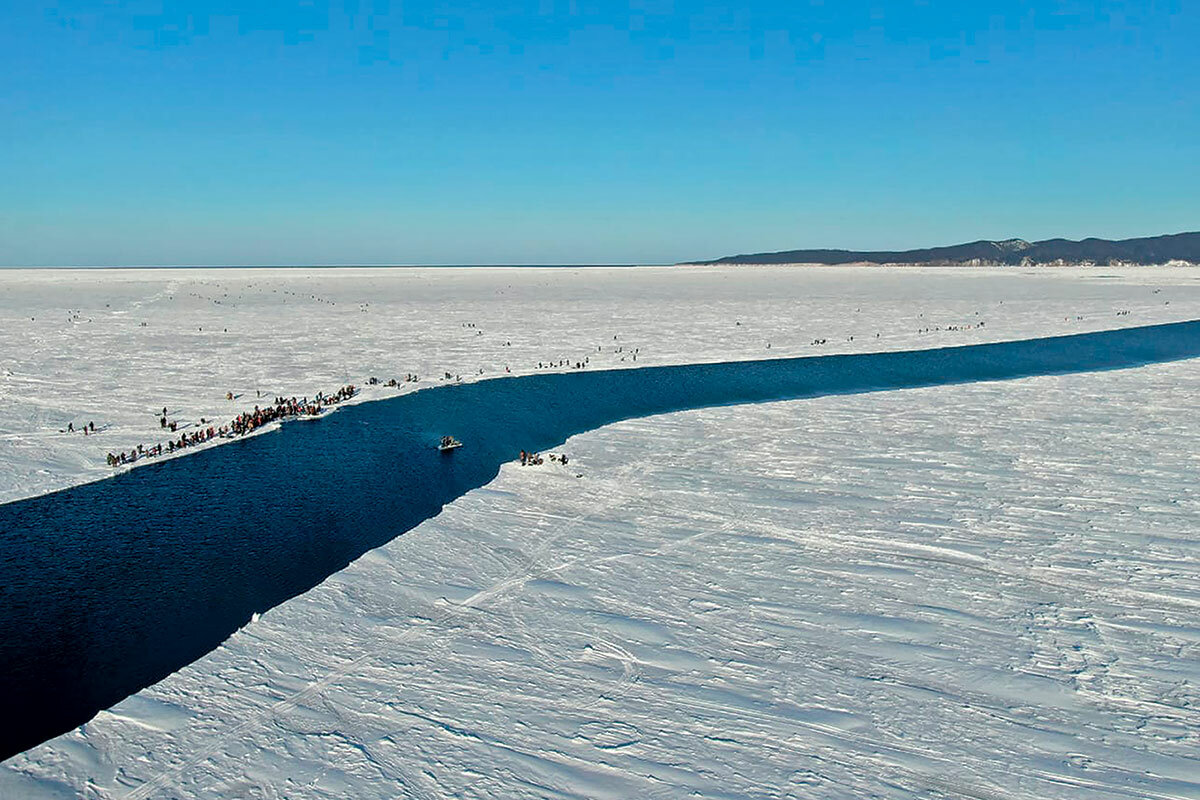Points of Progress: Lab-grown meat sold in Singapore, and more
Loading...
1. United States
3D-printing technology is creating a path to resilient, affordable housing. Used in niche construction projects for years, 3D printing has only recently expanded to the housing sector. Market researchers have identified a dozen companies working on 3D-printed houses around the world, including Icon, a developer based in Austin, Texas, that focuses primarily on sustainability and affordable housing. Using quick-drying concrete as the main printing material, its computer-generated buildings offer many advantages, such as rapid assembly, adaptable designs, and resilience against natural disasters.
After years of homelessness, Tim Shea became the first person in the United States to move into a 3D-printed home when he settled into a 400-square-foot Icon home in the Community First! Village in Austin last summer. The house took 48 hours to print, and features large windows, high ceilings, and modern, rounded corners. “It’s just phenomenally beautiful,” said Mr. Shea. “It just wraps around and gives me a feeling of life security.” (Thomson Reuters Foundation)
Why We Wrote This
Conservation solutions abound in our latest global progress round-up, ranging from high-tech poaching monitors in Honduras and Guatemala to a return to Indigenous rights of nature principles in Canada.
2. Canada
Northern Quebec’s Magpie River – or Muteshekau-shipu in the local Indigenous language – has won legal rights in a move hailed by environmentalists. Canada now joins at least 14 other nations, including New Zealand, Bangladesh, and Bolivia, where nature rights have been implemented through new laws, constitutional amendments, court decisions, or United Nations resolutions. Rooted in Indigenous beliefs that nature is a living entity entitled to certain rights and protections, these policies are offering a new avenue for activists to safeguard critical sites such as the Magpie River. The 186-mile-long river powers a hydroelectric dam, holds cultural significance for Indigenous communities, and is well known for white-water rafting. The International Observatory on the Rights of Nature, a Montreal-based nonprofit specializing in environmental legal action, helped the Innu Council of Ekuanitshit and the local regional county municipality draft the resolution. (Thomson Reuters Foundation, Reuters)
3. Guatemala and Honduras
Acoustic monitoring is strengthening anti-poaching patrols throughout key jaguar habitats. About 2,200 jaguars live in Guatemala and Honduras today. The populations play a critical role in maintaining genetic diversity for the jaguar corridor, which runs from Mexico to Argentina. The conservation organization Panthera uses recording units that are attached to trees and can pick up sounds within a 1,100-yard radius, in conjunction with AI software that captures gunshots, conversations, and other evidence of illegal hunting. Both were developed at Cornell University’s Center for Conservation Bioacoustics at the Lab for Ornithology. The technology was introduced in Cusuco and Jeannette Kawas national parks in Honduras and Guatemala’s Sierra Caral National Protected Area in 2017. Panthera’s Honduras Director Franklin Castañeda said recordings have led to some arrests, and increased understanding of poachers’ behavior, making on-foot patrols more efficient. The data also helps Panthera make a stronger case for more patrols, he said: “We are monitoring our own success, and when looking at our data we can see that indeed, our patrol teams are deterring poaching.” (Mongabay)
4. Russia
Russia’s Sakhalin region is set to launch an experiment into the country’s first carbon emissions trading program as part of a new effort to reach net-zero greenhouse gas emissions by 2025. The far-eastern region is made up of dozens of islands north of Japan, making it ideal for small-scale wind, hydro, and solar power operations, though its economy is largely based on fossil fuel extraction. The Russian government, which has been criticized for setting unambitious climate targets, signed off on the region’s net-zero road map in January.
The first step is carrying out an inventory of Sakhalin’s emissions and the area’s potential for natural carbon sequestration by the end of the summer. “This experiment will allow us to try various measures to regulate carbon and evaluate their effectiveness, for later scaling up at the national level,” said Russian Economic Development Minister Maxim Reshetnikov in a statement. (Thomson Reuters Foundation)
5. Uganda
Researchers at Eindhoven University of Technology in the Netherlands have built a machine that produces cheap liquid fertilizer with high levels of nitrate using only the sun, water, and air. The plasma reactor technology behind the solar-powered mini-plant may be cutting edge, fixing nitrogen in the air with an electrical charge. But the machine itself is simple to use. When the team sent its system to Uganda’s National Agricultural Research Organisation, which had never used plasma technology before, researchers there were able to produce a high-quality fertilizer within a month. The mini-plant is currently priced around $84,000, but the creators expect that figure to fall significantly as they expand production, putting it within reach for agricultural smallholders or villages to purchase collectively. In Africa, researchers note, most farmers have less than three acres of land and can’t afford to buy big-brand fertilizers, which are often sold in bulk from a centralized location. “The liquid fertilizer can be produced on-site and on-demand, so that each farmer can choose exactly the amount of fertilizer and nitrate content that she needs for her crop and plot of land,” said researcher Sirui Li. (Eindhoven University of Technology)
6. Singapore
Singapore is the first country to allow lab-grown meat to be sold to the public, a milestone for the nascent technology that experts say could improve food security and reduce greenhouse gas emissions from fisheries and livestock farming. Unlike increasingly popular plant-based meat alternatives, cultured meats are actual animal protein, grown from living animal cells in a lab setting. This process is typically very expensive – cultured shellfish from Shiok Meats, a company led by two Singaporean stem cell scientists, still costs $7,000 per kilogram – but at least one company, Eat Just, has been able to reduce costs and enter the market. Colin Buchan, executive chef at the private club 1880 in Singapore, is one of the first to serve the San Francisco startup’s poultry product to restaurant patrons. He turned the nuggets into two $17 options: a crispy chicken bao and a maple waffle chicken dish. “It’s a historic breakthrough in food technology and a challenge I’ve been excited to explore,” he said. “I’m looking forward to seeing what’s next.” (Life & Thyme, Reuters)










